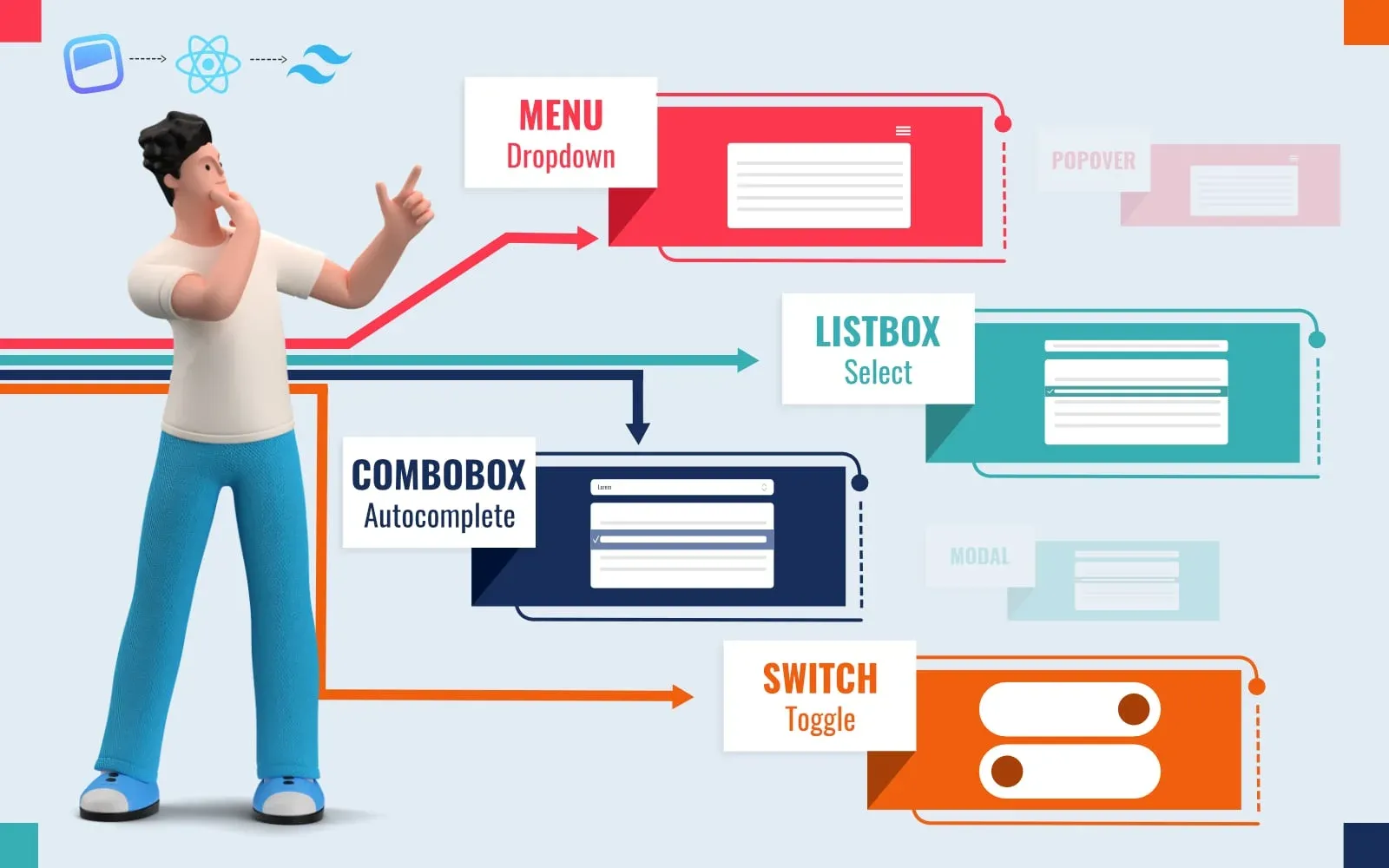Look, I've shipped 3 real apps with this stack, not just hello-world demos. After 8 months of fixing production bugs at 2am, I can tell you exactly where this combo will save your ass and where it'll make you want to burn your laptop. Here's the shit nobody warns you about.
Why These Three Tools Don't Suck Together
Tailwind CSS keeps your CSS bundle under control. My production app sits around 12KB gzipped because unused classes actually get purged (unlike every other CSS framework that promises this but fails). JIT compilation is fast enough that you're not sitting there waiting for rebuilds. No more bikeshedding about naming conventions or file organization. But the IntelliSense extension crashes harder than my hopes and dreams. Autocomplete just stops working randomly and you're back to restarting VS Code. It's maddening.

Headless UI fixes the accessibility nightmare you've been ignoring. I used to write modals and dropdowns, test them with a mouse, ship them, then get bug reports about keyboard navigation being completely broken. With Headless UI, those 16 components just work - focus trapping, ARIA attributes, keyboard navigation, all the shit that takes hours to get right. But the TypeScript types lag behind releases, so you'll waste an hour debugging why your perfectly valid props are throwing type errors. Turns out you're using the old interface.

Next.js 15 doesn't actively sabotage your life (mostly). The App Router stopped throwing random hydration errors every other build. React Server Components actually keep server code out of your client bundle. File-based routing makes sense and middleware handles auth without ceremony. Turbopack builds are fast when it works, but it randomly decides to rebuild your entire app during demos because computers hate us. The React 19 integration adds cool features while breaking half your dependencies.
What Actually Breaks in Production
Week one with this stack is CSS hell. Tailwind's specificity is intentionally low, so every random component library you install will override your carefully crafted styles. Tailwind's preflight resets will break any third-party component that expects browser defaults. I spent 3 days debugging why a date picker looked like trash before realizing Tailwind's reset was nuking the styles. Solution: stop installing random components and build everything yourself. Fun.

Mobile Safari wants to watch your career burn. Headless UI modals break focus trapping on iOS - users tap frantically and can't close the modal, then leave 1-star reviews calling your app "broken". Got flooded with support emails about this disaster. The fix is preventScroll: false hidden in a GitHub discussion that took me forever to find. iOS Safari is more unreliable than a chocolate teapot.
Next.js builds fail randomly for sport. You're coding along fine, run npm run build, and suddenly get "Module not found" errors for files that definitely exist. I've learned to rm -rf .next before debugging anything else because this happens way too often. The build cache corruption is about as stable as a house of cards in a hurricane.
Production Reality Check
My biggest app hits around 50K users monthly. Bundle is roughly 180KB JS, maybe 12KB CSS. First paint is around 1.2 seconds on 3G (not the fantasy 800ms from marketing demos). Layout shift hovers around 0.08 because Tailwind loads instantly but images don't, obviously. Web Vitals stay green if you optimize images properly.
The accessibility actually works though. I run axe DevTools and get zero errors on forms and navigation. Screen readers don't completely break. Lighthouse gives me 95+ without custom ARIA markup. That alone justifies the TypeScript headaches.
Big companies use this stack because they have DevOps teams to babysit the build pipeline weirdness. You probably don't.
But first you have to survive the setup from hell. That's where most developers rage-quit and crawl back to Create React App with Material-UI.



